Marzipan ice cream
Marzipan! This delightful combination of sugar and almonds is, next to ice cream, probably one of the tastiest sweet things I know. Would it not be practical, then, to combine the two for maximum indulgence?
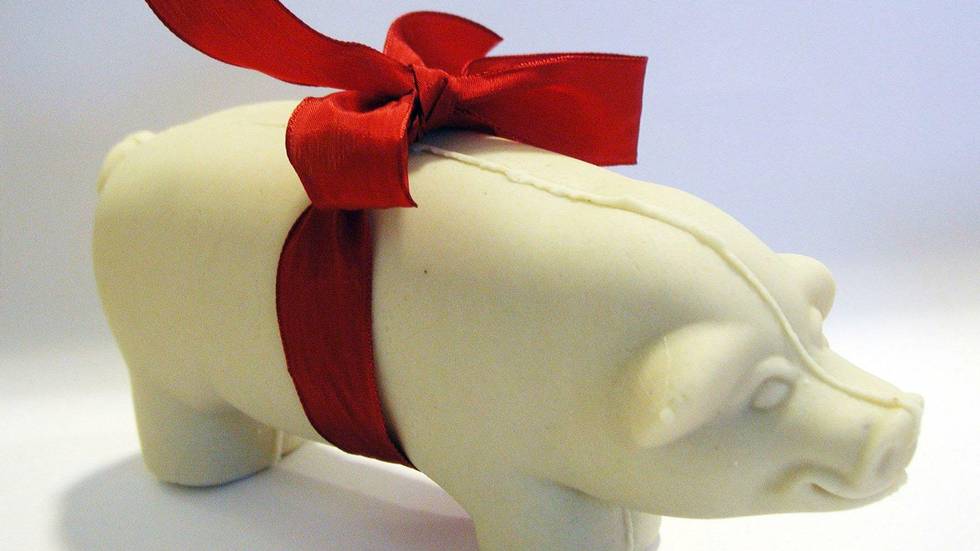
Marzipan pigs are a common sight in many Scandinavian countries around Christmas. I still get one from my loving mother every Christmas: a clear sign that my youthful kitchen raids against her stock of almond paste were quickly forgiven.
As far as I remember, ever since I raided my mother’s kitchen in search of almond paste as a little child, I have had cravings for marzipan and its close sibling, almond paste. I don’t know exactly what it is that makes this product so spell-bindingly attractive to me, but I would guess the secret lies in the fortuitous combination of sweet almond flavour and the soft-solid consistency. But making marzipan ice cream is not necessarily easy.
Having tested a few methods, I can conclude that dissolving marzipan in an ice cream base often nets you a nice almond-type ice cream. But not really a marzipan ice cream, if you get my drift. What I was after was something that did not only taste (more) like marzipan/almond paste, but also conveyed at least something of the texture.
Today, I think I have a working recipe! If you – like myself – also crave marzipan and almond paste from time to time, this should turn out to be a very memorable ice cream 🙂 .
If I would have to specify the ice cream base used, the closest type would probably be “gelato” (= high proportions of milk and sugar, little or no cream).
I should perhaps also warn you that the recipe contain quite a lot of sugar (as does marzipan …). If you would like to try using less sugar, I think that might turn out nicely too. But here, I went for something akin to “ice-creamized marzipan” so, although very sweet, it does come across as a rather faithful adaptation. And while high on sugar, the recipe at least contains no eggs. While eggs could be used, I instead decided to try some natural Agar agar as stabiliser. Unlike eggs, Agar agar contains almost no calories. And wow – it does pack a lot of stabilising punch! In fact, you could probably get away with using only about half of the Agar agar noted in the recipe and still have sufficient stabilisation!
How to do it
In order to get closer to the texture I was after, I decided to ground almonds (blanched) myself, rather than dissolving ready-made marzipan/almond paste.
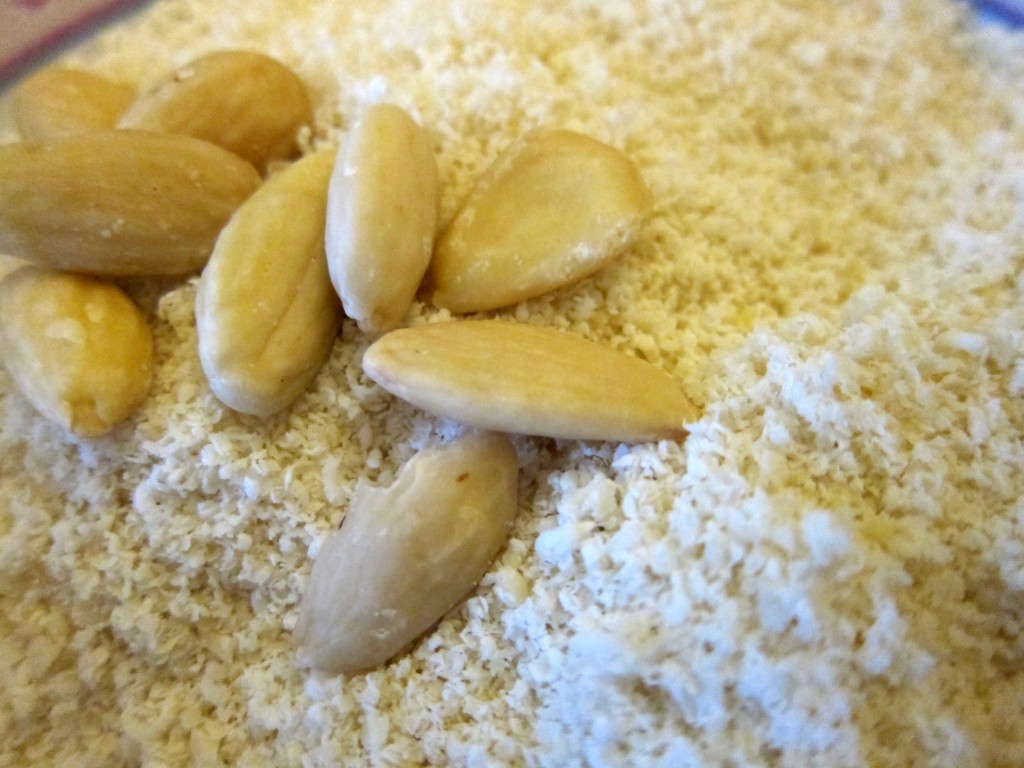
Grind the almonds, but not too fine: in the end, the idea is that they should add to the texture and not simply ‘disappear’ without any trace
Preparing the ice cream base is very simple: Put together the milk, the ground almond, and the sugar. Heat until warm/hot, then add the Agar agar!
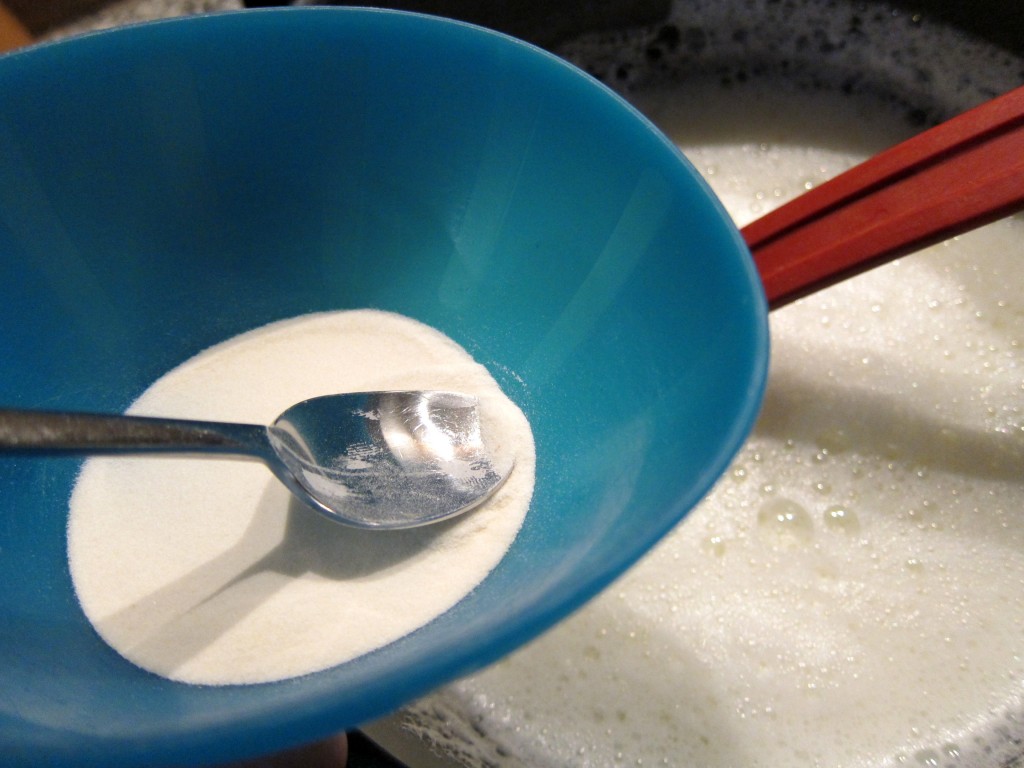
Agar agar – one of the ‘natural’ stabilisers. A (very) small amount goes a long way though, so be careful about the measuring.
Agar agar and how to use it
Agar agar has been around for quite a while. This product, derived from seaweed or red algea, probably still counts as one of those ‘exotic’ (hard-to-find) stabilisers one reads about in books. But to my surprise, even some of my local supermarkets have actually begun to sell it now, so perhaps it is getting more commonplace. Anyway, Agar agar is very interesting – and effective! For a standard batch of up to about 1 liter/1 quart, I would strongly suggest that you start out by only using about 1 gram (= 2 levelled teaspoons). That seemed very little to me, and I had my doubts. But when I saw the stabilisation set it, I quickly changed my mind!
There are a few things to remember when working with Agar agar:
- Measure carefully – a little goes a long way: after all, you want to end up with an ice cream base, not a rubber dough!
- Dissolve the Agar agar in hot liquid (as it is insoluble in cold water), then bring it to a boil [in order to “trigger” the agar] and let simmer for a few more minutes (say, about 4 minutes or so) before taking it off the heat: that should properly activate the stabilising effect!
- The solidifying effect begins to show once the cooling liquid reaches about 40°C ( 37° Celsius/98.6° F, to be exact).
For ice cream-purposes, the easiest way to ensure that Agar agar is properly used is probably to simply heat the base, whisk in the Agar agar and bring it all to a boil. Then, let the base (with the Agar agar) simmer close to the boiling point for a few more minutes. Unlike for instance gelatine and corn starch, Agar agar does not lose its stabilising powers if exposed to prolonged heating – in fact, as just noted, it needs to reach a boiling temperature to work properly.
Should you deal with delicate ice cream ingredients not suitable for boiling temperatures, try to add them to the base once it has begun to cool down. Agar agar does not begin to stabilise immediately, so there is some time to do it at more forgiving, lower temperatures.
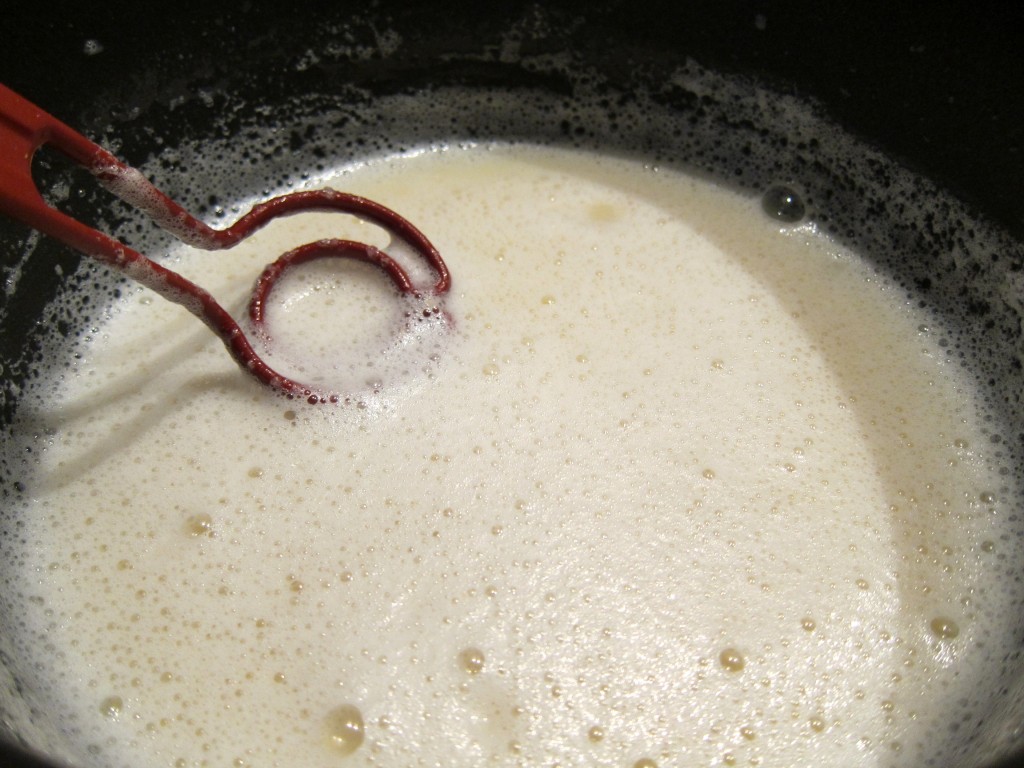
Most of the base has been added (all, if you do not want to add any cream), and has been brought to the boil. Agar agar has been added and the mixture will simmer for about 4 more minutes before being taken off the heat.
Once the ice cream base (with the Agar agar) has been brought to the boil and then been through the minutes of simmering, take it off the heat and let it cool down. After a while, you will be able to notice the gelling effects of the Agar agar … don’t worry: it if looks too compact and “lumpy”, just whisk and you will notice that the overall consistency is very soft and not at all rubbery (if you have not overdosed on the Agar agar, that is 😉 ).
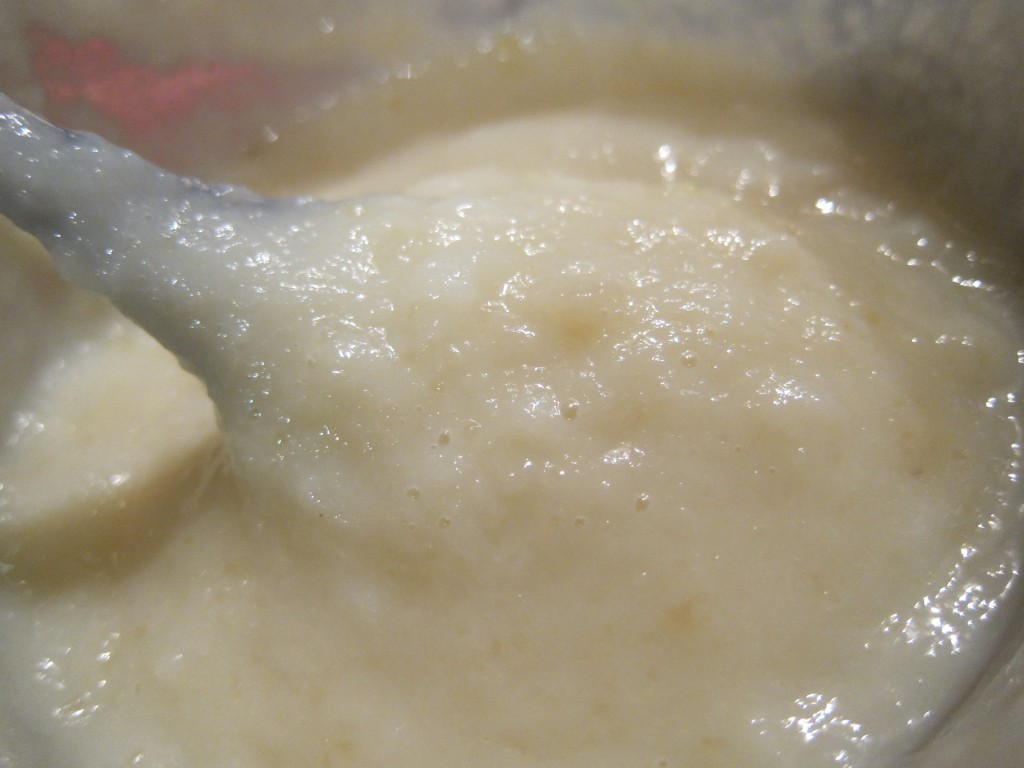
Agar agar doing its stabilising job – don’t be worried about the seemingly lumpy result: those “lumps” will not be noticeable in the end
Once cooled down, churn the ice cream base in your ice cream machine (or still-freeze using only your freezer, according to the good advice given in this helpful post).
If you want to add some further richness and also somewhat “soften” the overall flavour, I can recommend adding about 100 ml (0.4 cup) cream straight into the ice cream base during the last minutes of the churning (hereafter you should allow for a few extra minutes of churning …).
Enjoy immediately, or allow the ice cream some further time in the freezer to firm up (it will take some extra time, given the high amount of sugar!).
Marzipan ice cream – finally a worthy version!
Just because I love marzipan and almond paste, I almost never order marzipan ice cream in ice cream shops – I can’t bear the disappointment. Luckily, this recipe made me feel elated! It manages to convey all those nice things which I associate with the heavenly almond confection: the clear, full and sweet almond flavour and that elusive, tasty mouthfeel hinting at the existence of small almond particles. In conclusion: this is not simply “another almond ice cream” – it is marzipan, reborn as ice cream!
- 500 ml (about 2½ cup) whole milk
- 330 ml (about 1.4 cup) sugar
- 1 gram Agar agar (2 levelled teaspoons ... or less!)
- 200 ml (about ¾ cup) ground blanched sweet almonds
- 100 ml (about 0.4 cup) cream
- Add milk, sugar and the ground sweet almonds in a saucepan and heat until warm/hot. Then add the Agar agar and whisk.
- Bring to a boil, then turn down the heat to a simmer for about 4 minutes.
- Take off from the heat and let cool down, possibly even chill.
- Once cooled/chilled down, whisk, then churn the ice cream base in your ice cream machine (or still-freeze, using your freezer).
- Towards the end of the (machine-)churning, add the cream and let the churning finish.
- Once ready, enjoy the ice cream fresh on the spot or store in freezer-safe container (with plastic film and lid over) in the freezer.
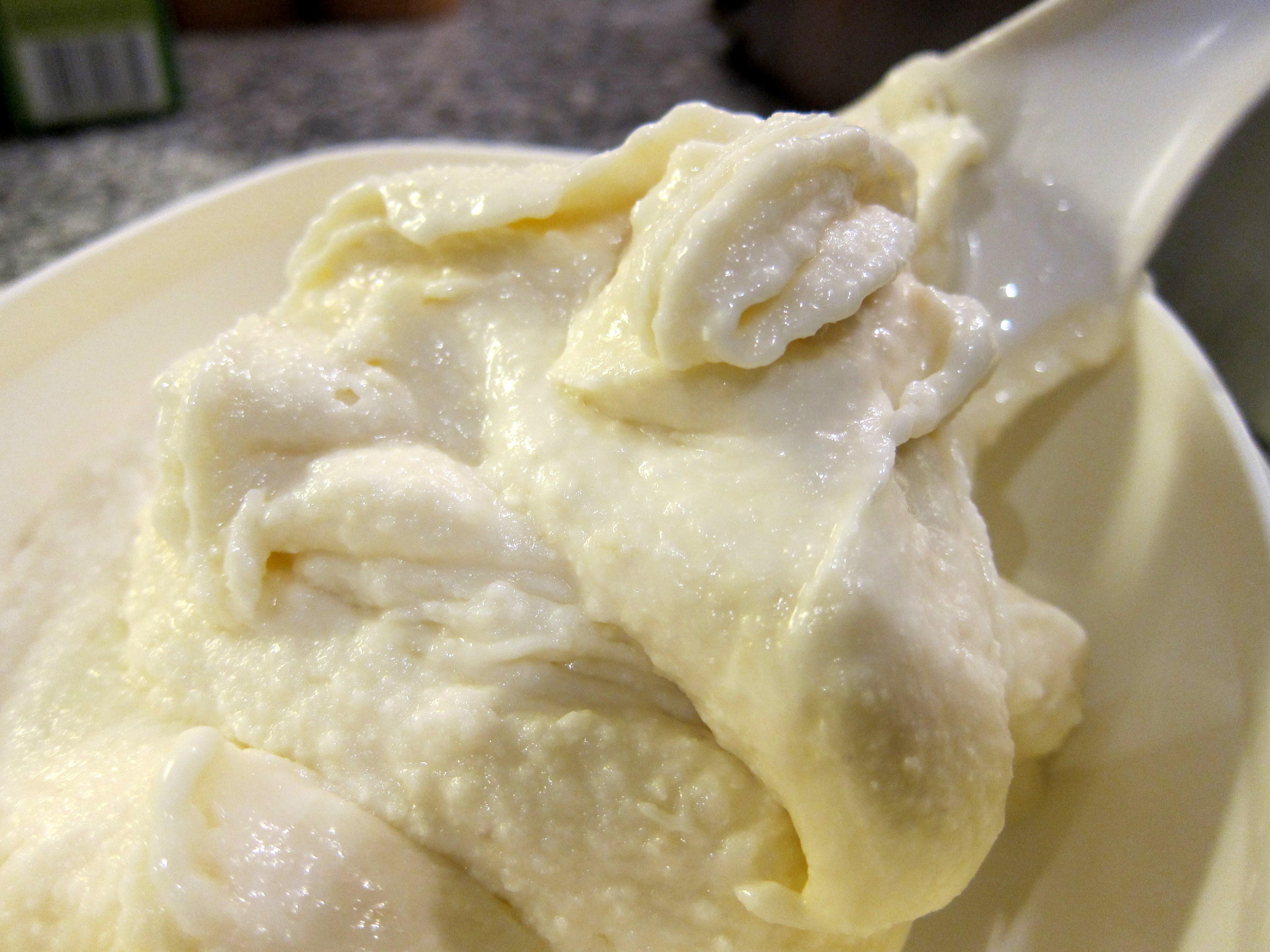
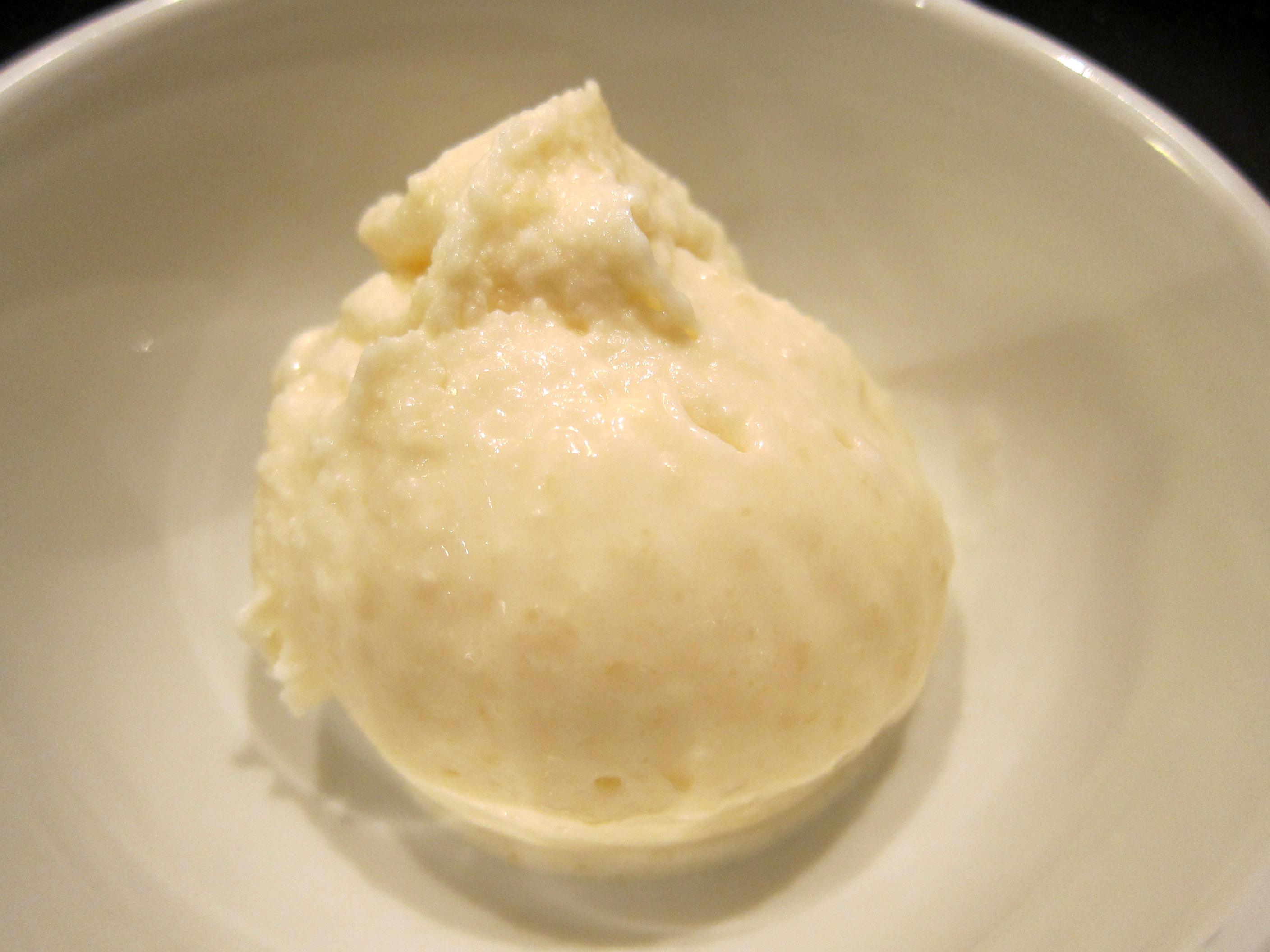
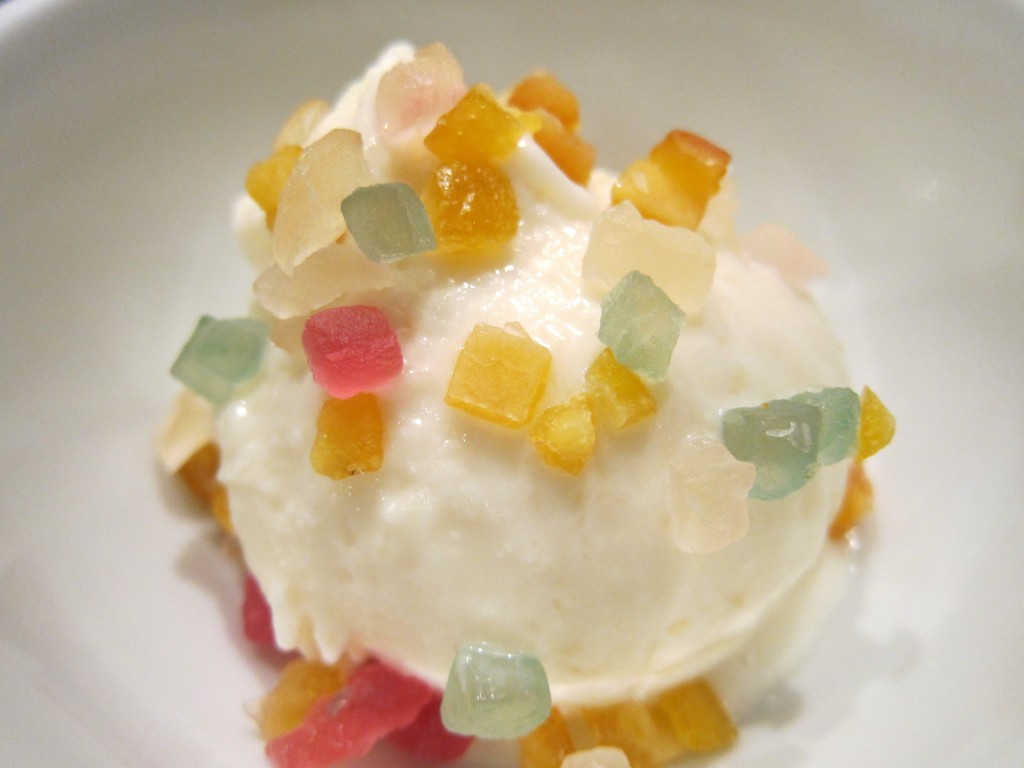
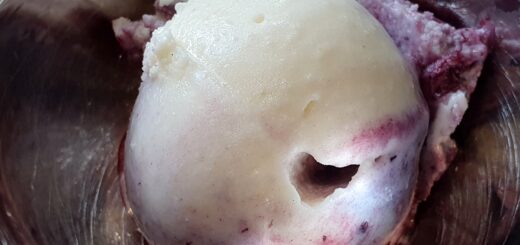
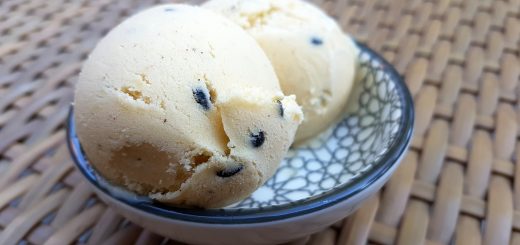
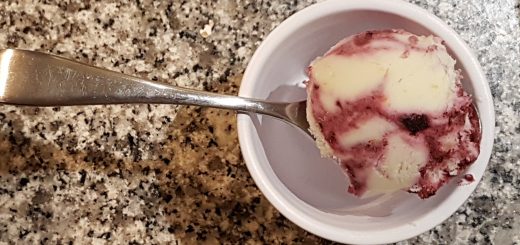


How can I make your recipe diabetic friendly?
Dear Cheryl,
You would basically need to replace the sugar, then possibly adjust for the (possible) loss of softness that may follow. May I suggest that you take a look at this page for these, and other, aspects: http://www.icecreamnation.org/allergies-vegans/
Are Agar Agar flakes ok or does it have to be powder?
Hi Alice,
Agar agar flakes are fine too; just make sure the dosage is (at least roughly) equivalent 🙂
If I’m using the still-freeze method, when would i add the cream? Or should i skip that step?
Mike,
When still-freezing, I would say that, for the best results, you should probably add the cream together with the milk from the very beginning. You could also add the cream towards the very end, before you put the ice cream base into the freezer to freeze, but that method really works better with an ice cream machine. Best of luck!
Hi,
Is there anything else I can use instead of Agar agar? It’s proving hard to get hold of.
Thanks
Rhian,
As Agar agar is a stabiliser, you could try with any other stabiliser (you can find a few listed in the post-link!). You could, for instance, try your luck with starch! If you search the site, you will find plenty of recipes using the ‘sicilian gelato’ base: I hope it will serve you well, in the absence of agar agar.
Hello I enjoyed the web page. I would like to know where you can buy the pig mold. As it is similar to the Christmas pigs I grew up with.
Regards Knut
Hello Knut.
I wish I knew, but the nice marzipan pig was bought in a store and I have not come across any such moulds for sale.
hello! (sorry, this isn’t a recipe question) i’d actually love to know where the red whisk type tool is from or what it is called!? i’ve seen and asked about it on a korean youtubers channel and i’ve google search evvvvvvvvery combination i can think of to find it, without luck.
i hope you can help! thank you
Hi Fiona,
Yes – that whisk is really great, and is one of my all-time favourite kitchen tools!
It is called the Omega Visp (Visp = Whisk, in Swedish), and is actually of Swedish design.
While it should be possible to order it from some Swedish stores, I’m afraid I can only encourage you to find an international reseller (at Amazon, it was
unfortunately marked “currently unavailable” when I just checked …). Good luck in hunting one down!
Hi Anders.
I’ve read somewhere that agar should be dissolved in a little amount of water than boiled and added to the milk-cream base. The problem is that this additional water spoils the structure of our ice cream.
I’ve read also that the cream and milk shouldn’t be boiled. The pasteurisation of ice cream base is around 65-85C. So do you think such a temperature will be enough for the agar begin to work? Is it possible to add the agar powder mixed with sugar etc at the beginning of the heating proccess and heat all up to 80C?
Do you think it will work?
Best regards. Adam
Hi Adam,
I’m not sure where you have picked up these pieces of information – while agar can be dissolved in a small amount of water, it is totally possible to use it straight off in a recipe like this one (without any prior dissolution in a smaller amount of water). And why should cream and milk not be boiled? Again, I don’t really see the reasons here (apart from the obvious, namely that one should avoid the milk boiling over).
You may well experiment with lower temperatures, but as far as I know, agar needs the higher temperature to activate properly.